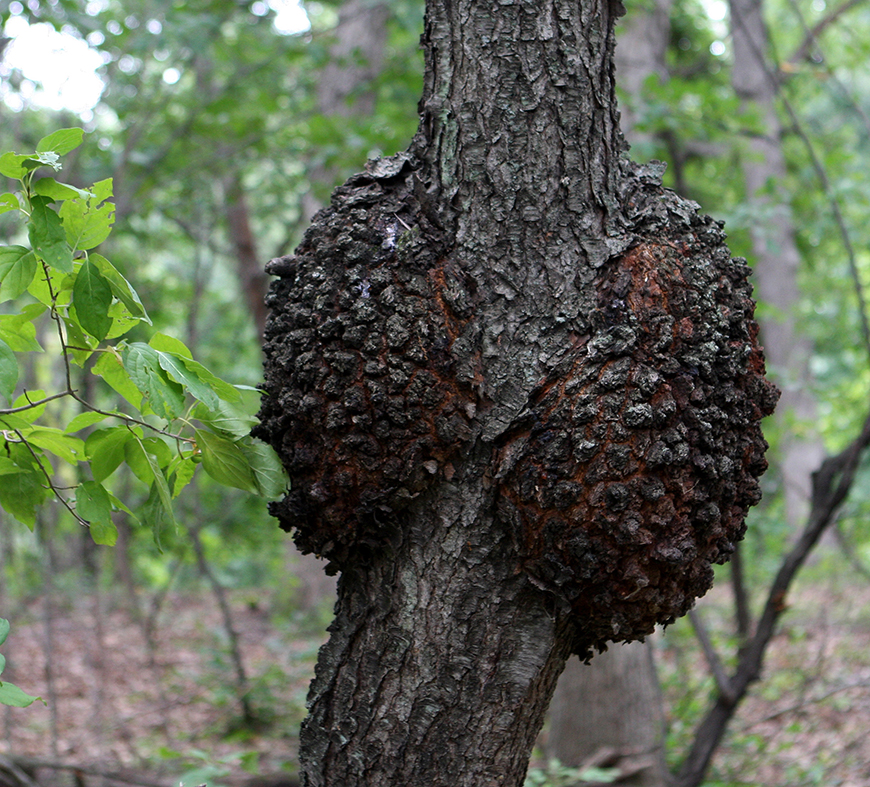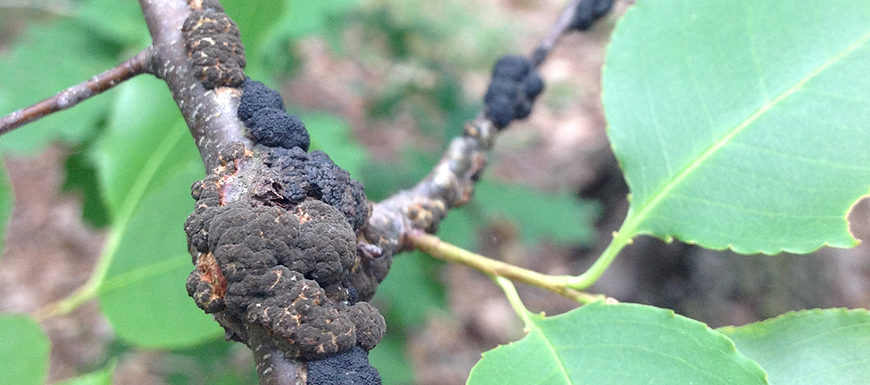What is Black Knot?
Black Knot, caused by the fungus Apiosporina morbosa, is a very common disease of plants in the genus Prunus (See list below). A survey in Alberta revealed a significant and widespread distribution of Black Knot found in commercial, municipal, private and natural plantings. This disease reduces the aesthetic value of affected specimens, as infections spread rapidly; high levels may result in the eventual death of the plant.
If you find Black Knot on private property, speak with the property owner. If you notice it on municipal trails, parks or other municipal land please call Town of Peace River Community Services at 780-624-3204.
The following is a list of plant species affected by Black Knot:
- Amur Cherry
- Mayday Tree
- Apricot
- Mongolian Cherry
- Black Cherry
- Nanking Cherry
- Chokecherry
- Pin Cherry
- Dropmore Cherry
- Cultivated Plum
- Flowering Almond
- Wild Plum
- Flowering Plum
- Prunus Hybrids
- Japanese Plum
- Sand Cherry
- Korean Cherry
- Sour Cherry
How can you recognize Black Knot?
The most distinguishing symptom of Black Knot is the characteristic black, tar-like swellings that develop on branches of the infected plant.
Initially, a small, olive-green gall or swelling will develop at a succulent growing point or fruit spur (as a result of spores landing and infection taking place). This swelling will grow until it is mature after 2-3 years. The mature galls are hard, black, 10 to 15 cm (4 to 6 inches) and may be somewhat ruptured. Mature galls will produce and release a vast amount of spores during the bloom period, resulting in a rapid increase in infections. The fungus continues to grow internally and externally, with the branch eventually becoming girdled and dying.

What can be done to control Black Knot?
- Removal of sources of inoculum (prevents population build up)
- Prune out all knot-bearing branches during late fall, winter or very early spring when plants are dormant and knots are easy to see
- Remove infected branches to at least 15-20 cm (6-8 inches) below knot. NOTE: It is preferable to prune an infected branch further back to an appropriate location, such as a healthy collar, rather than leave a stub
- As a precaution, cutting blades should be cleaned and disinfected after pruning, if possible, especially if cuts have been made through obviously infected material
- For knots on scaffold branches or trunks that can’t be removed, cut away diseased tissue down to good wood and at least 1 cm (1/2 inch) beyond the edge of the knot
- Failure to remove branches beyond the internal growth will result in re-growth of the fungus
- DISEASED WOOD MUST BE DESTROYED IMMEDIATELY (burned, buried or removed from site). Diseased knots can produce and release spores for up to 4 months after removal. Proper composting can help to accelerate the breakdown of infected materials
- Ensure plants are healthy and free from stress (not a guarantee from disease)
- Regular monitoring
- Ensure adequate canopy ventilation through proper pruning
- Chemical control (preventative not curative)
- Few choices available
- Not usually recommended unless for valuable plantings, such as collections, orchards, arboreta or for severe infestations
- Other options
- May include use of more resistant selections, ensuring adequate buffer zones between plantings and wild stock, or potential employing biological control products (limited)
- Consider hiring a trained professional for pruning activities (Find a Certified Arborist)
Additional References:
Black Knot of Plums
Tree Fruit and Berry Pathology
Acknowledgments
This content was republished from the Government of Alberta.

